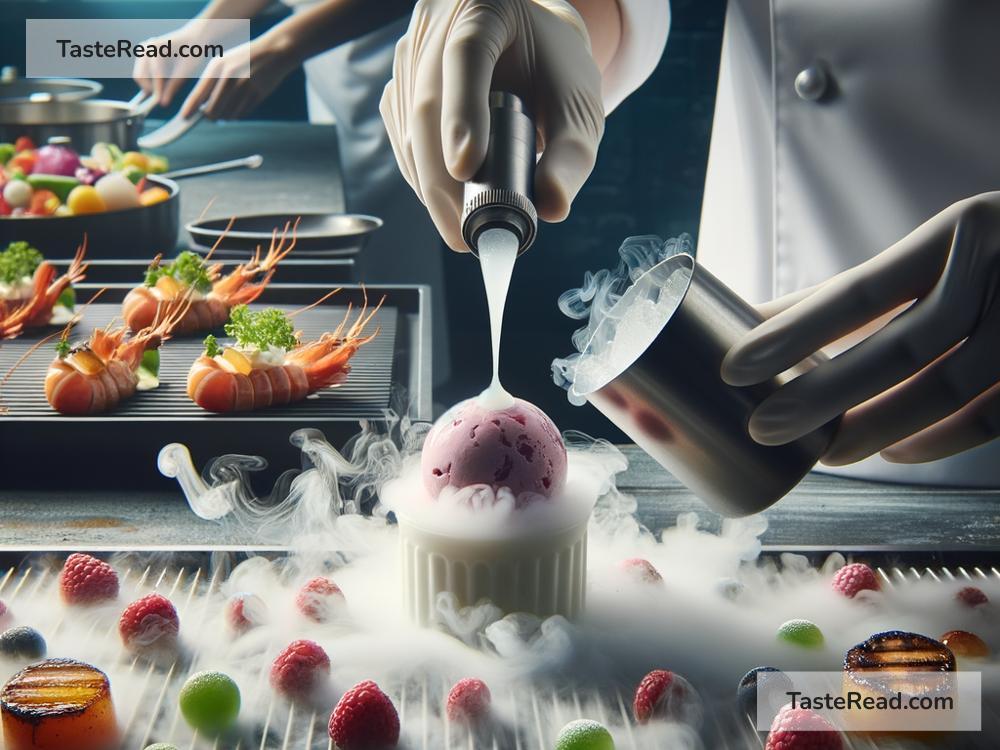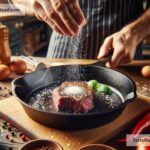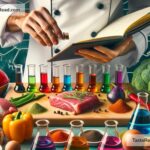The Science of Cooking with Chemical Thermodynamics: Techniques and Tips
Cooking is often thought of as an art, but did you know that it’s also a science? Every dish you prepare involves chemical reactions and energy changes governed by thermodynamics. Don’t worry, you don’t need a chemistry degree to understand it! In this blog, we’ll explain how chemical thermodynamics works in cooking and share tips to help you make better meals with science on your side.
What is Chemical Thermodynamics?
Thermodynamics is a branch of science that deals with energy. In the context of cooking, it’s all about how heat (thermal energy) affects food. Chemical thermodynamics specifically studies how molecules in food react, transform, and interact when energy changes happen—like heating, cooling, or mixing ingredients. When you cook, you’re essentially orchestrating a series of chemical reactions, all driven by the principles of thermodynamics.
Let’s explore some of the key science concepts and how they relate to cooking.
The Role of Heat in Cooking
Heat is one of the most important tools in cooking. Whether you’re grilling a steak or baking cookies, applying heat causes molecules in food to move faster, leading to reactions that change its flavor, texture, and appearance. Here’s what’s happening under the surface:
-
Chemical Reactions Produce Flavor: For example, when you sear a steak, heat triggers the Maillard reaction. This process occurs when proteins and sugars in food break down and recombine to create new molecules that we recognize as rich, savory flavors. It’s why browned foods taste so good.
-
Physical Changes Alter Texture: Heat doesn’t just create flavors—it also changes the texture of food. Proteins denature (unwind) and coagulate (clump together), causing egg whites to go from runny to firm. Similarly, starches in rice or pasta absorb water and swell during cooking, giving them that soft texture we love.
-
Temperature Matters: Every cooking process has an ideal temperature range. Too little heat won’t trigger necessary reactions, and too much can burn or dry out your food. For instance, cooking chicken to 165°F (74°C) ensures it’s safe to eat, but overcook it and you’ll end up with dry meat. Using a food thermometer can be a game-changer.
Pro Tip: Don’t rely on guesswork—use tools like a thermometer to hit the perfect temperature for your recipes! You’ll be more precise and get consistent results.
Conservation of Energy in Cooking
The first law of thermodynamics states that energy cannot be created or destroyed, only transferred or transformed. When you cook, the heat you apply isn’t just disappearing—it’s being absorbed by the food, redistributed within it, and eventually radiated away. Understanding how energy moves through food can help you cook smarter.
-
Cooking Efficiency: The way you transfer energy to food matters. For example, boiling water for pasta is efficient because the water evenly transfers heat to the noodles. On the other hand, frying uses oil, which is better at transferring heat rapidly because it contacts more of the food’s surface.
-
Thermal Conductivity: The material of your cookware plays a big role in how heat is distributed. Cast iron pans conduct heat slowly but retain it well, making them perfect for searing steak or baking cornbread. Stainless steel heats up faster but doesn’t retain heat as well, which is great for quick sautéing.
Pro Tip: To save energy and time, make sure your cookware matches the cooking task. For even heat distribution, invest in quality pots and pans.
Entropy and Spontaneous Changes in Cooking
Entropy in thermodynamics is a measure of disorder or randomness. Fun fact: some chemical reactions in cooking happen naturally because they increase entropy. For instance, melting butter or dissolving sugar in water happens almost effortlessly.
Some cooking processes, however, require an input of energy to overcome barriers. Baking bread, for example, involves yeast fermenting sugar and releasing carbon dioxide, but the bread won’t rise without enough heat to activate the yeast and create air pockets.
Pro Tip: Pay attention to your recipe’s instructions—some processes need specific steps (like kneading dough or preheating the oven) to provide the necessary energy for reactions to take place.
Techniques to Harness Thermodynamics in Cooking
-
Use Heat Gradients: Cooking techniques like sous vide rely on steady, low-temperature heat to cook food evenly, preserving moisture and flavor while preventing overcooking. This is thermodynamics in action—you’re controlling the energy transfer.
-
Preheating is Key: Whether it’s an oven or a frying pan, preheating ensures that the energy transfer is optimal from the start. If your pan isn’t hot enough, you’ll miss out on those delicious bonding reactions (like the Maillard reaction).
-
Resting After Cooking: Letting meat rest after cooking allows heat to redistribute evenly, ensuring tender, juicy results. When you cut meat right away, you release those carefully redistributed juices, which can result in dryness.
Pro Tip: Experiment with thermodynamics-friendly methods like sous vide or resting techniques. They’re easy to master and can level up your cooking.
Wrapping Up
Cooking is more than just combining ingredients—it’s the science of transforming food using energy. By understanding the principles of chemical thermodynamics, you can control heat, work smarter with energy transfers, and make more delicious meals.
Remember: cooking is a blend of art and science. While understanding thermodynamics won’t replace creativity in the kitchen, it can help you cook with greater precision and confidence. So, the next time you sear a steak or boil pasta, give a nod to the science behind your culinary masterpiece.
Happy cooking!


